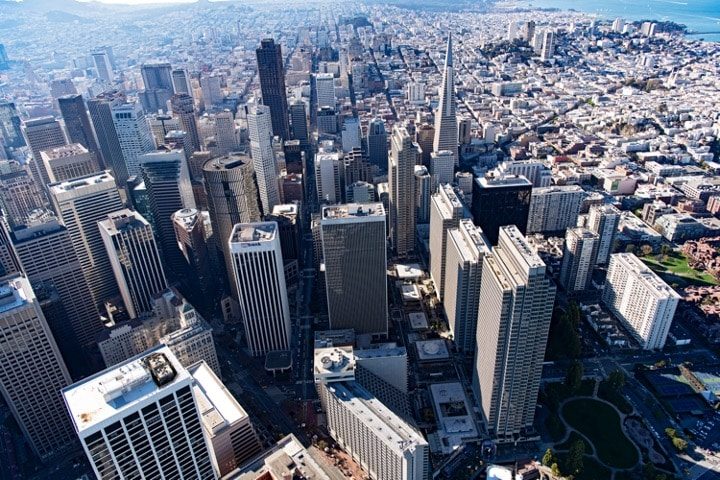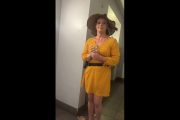
San Francisco’s “doom loop” continues its downward spiral with the announcement of yet another major commercial player giving its property back to its lenders. On Monday the European multinational commercial real estate company Unibail-Rodamco-Westfield notified its lenders that it was giving control of its San Francisco Centre Mall to them.
A spokesman for the company was concise in the reason for this: “Challenging operating conditions in downtown San Francisco, which have led to declines in sales, occupancy, and foot traffic.”
Those “operating conditions” have gone from awful to catastrophic. Total sales at the center dropped from $455 million in 2019 to less than $300 million in 2022. Foot traffic — i.e., consumers with money to spend — plunged from almost 10 million visits in 2019 to just over five million last year, and occupancy levels at the mall have dropped to just 55 percent.
Ted Egan, the city’s chief economist, explained the impact of the “doom loop”:
It is contributing to a loss of business tax revenue to the city, and a loss of ridership for local transit agencies. It has also harmed small businesses located downtown, who don’t have the same foot traffic from office workers eating lunch, meeting after work, or shopping during the day. It is also curtailing business tourism.
Thomas LaSalvia of Moody’s Analytics calls it “losing critical mass”: “Westfield’s move shows they see risk in the city losing critical mass and [are anticipating] a long period of suffering for downtown San Francisco.”
The decrease in foot traffic hurts the city’s 27 public transit systems as well, which anticipate a cumulative operating shortfall of at least $2.5 billion over the next five years if current trends continue.
As The New American recently noted, everyday people, businesses, and Hollywood stars are exiting the City by the Bay by the hundreds of thousands. They’re taking with them an estimated $7 billion in annual incomes, which the city was depending upon to keep operating in the black. Their escape to safer, cleaner, lower-cost climes is resulting in the city projecting a $728 million deficit over the next two fiscal years — and is leaving behind some 35 million square feet of unoccupied office space — about a third of all such space in the city.
Tony Hall, a former member of San Francisco’s Board of Supervisors, sadly noted:
This [was] once a very great, thriving metropolis. It’s now just a wasteland. Come here and look around at the businesses. Look at the shops that are close to the small neighborhood businesses that are boarded up. Thirty percent of the office retail space downtown is now empty.
And the state itself is in no shape to help San Francisco, as the exit of people and their incomes is a statewide issue. California is projecting a $22 billion budget deficit this year.
Part of the blame can be placed on politicians who, over the years, have made it increasingly difficult to do business in the city. In San Francisco it takes 87 permits, 1,000 days of meetings, and $500,000 in legal, accounting, and architectural fees to build a single residential project.
It’s easy to blame all the attendant markers of a city in decline for the continuation of the “doom loop” – crime, homelessness, cost (and danger) of living, pollution, congestion, liberal policies eliminating cash bail for criminals, and so forth.
But readers should remember that the American Republic was designed and built by the Founders for a people who largely held to beliefs in personal responsibility and high moral standards. And those were informed and held dear to the degree that the people themselves had a meaningful religious foundation on which to run their lives. As John Adams said, “Our Constitution was made only for a moral and religious people. It is wholly inadequate to the government of any other.”
If you remove the foundations of faith, the outcome is predictable. As the Bible itself says (Psalm 11:3), “The foundations of law and order have collapsed. What can the righteous do?” (New Living Translation)
San Francisco is one of the more prominent, but certainly not the only, examples of what happens when that foundational religious structure has rotted away.



